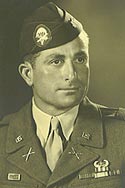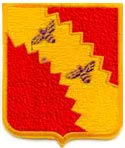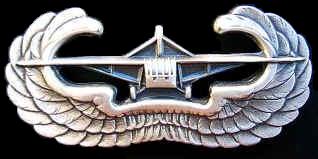|
|
. 680th. GLIDER FIELD ARTILLERY BATTALION |
|
 <-Lieutenant
Colonel Paul F. Oswald
<-Lieutenant
Colonel Paul F. Oswald
The 680th
Glider Field Artillery Battalion GFAB was constituted on 10 March 1943 at Camp
Mackall, North Carolina. The officers were recent graduates of the Field
Artillery School, while men were transferred from 321th GFAB of the 101st
Airborne stationed at Fort Bragg. The 680th was activated at Camp Mackall, North
Carolina under the command of Lieutenant Colonel Paul F.
Oswald the 15 April 1943. The 680th was immediately assigned
to the 17th Airborne Division.
It participated in Tennessee maneuvers the 7 February 1944 before being sent first to Camp Forrest,
Tennessee the 24 March 1944, then he made one step at Camp Myles Standish,
Massachusetts August 14, 1944. It departed from
Boston to 20
August 1944 to embark on a ship, the USS Wakefield towards England on 28 August
1944.
Arriving in
England, the 680th was sent to Camp
Chisledon, the region where stationed throughout the 17th Airborne.
There, they continued training with additional training and flight tactics and
maneuvers at night. When Operation Market Garden was initiated, the 17th
Airborne was still in training, it served therefore reserve unit.
![]() Belgium – Decembre
1944 – Battle of the Bulge
Belgium – Decembre
1944 – Battle of the Bulge
On December
16, 1944, the Germans launched an offensive through the Ardennes Forest
surprising the Allied Forces. The 17th
Airborne remained in England. The 82nd and the
101st was at rest at Sisson, France were sent by trucks rushed to contain the
German advance.
Between December 17 and 23, the 82nd Airborne
blocked the German advance near St. Vith. As the 101st it was surrounded with
the 7th Armored Division in Bastogne. To help reinforce Bastogne, the 17th
Airborne was fielded.
From 23 to 25 December, the units of the 17th
Airborne were sent by air in
France in the region of Reims. But
meanwhile, the General Patton’s 3rd Army had broken the siege of Bastogne.
During this transfer, a tragic accident touched the battalion. A C-47 crashed on takeoff at the Dreux’s airport, killing 6 members of Battery A. Another similar accident on the basis of Orleans wounding 6 men of the battery B.
Arriving in France, the 17th Airborne was attached to Patton's army and were ordered to be entrenched in Mourmelon. The 680th's mission was to support the 193rd GIR for the defense along the Meuse in an area ranging from Givet in Verdun until 1 January and was sent to Neufchteau, Belgium from there, walk in the snow, they went to Morhet found for the 28th Infantry Division the 3 January 1945. He established the HQ Division.
The
following days, the 680th have been baptism of fire. General Patton had ordered
the 17th Airborne to seize the town of Flamierge where the 11th Armored Division
and 87th Infantry Division had encountered brutal resistance. During this first
week of fighting, the battalion fired 5.560 rounds. The casualties were 2 killed
and 5 wounded.
The following month, the 680th GFAB was moved several times in Belgium, as
artillery support to the 513th PIR until December 27 or the battalion took
position near Bockholz Luxembourg. On 11 February the 680th GFAB was relieved by
the 212nd Field Artillery Battalion and returned to Camp at Chalons-sur-Marne,
France.
It prepared for the final airborne operation, "Operation
Varsity"
![]() Germany – March 1945 – Operation Varsity
Germany – March 1945 – Operation Varsity
In early February, the situation on the front helped to assess exactly where and when the
2nd British Army would be ready to force a pass to cross the Rhine. It was
determined that the crossing would coincide with an airborne operation by XVIII
Airborne Corps.
The area selected for the assault was in the vicinity of Wesel, North of the
Ruhr. The operation was to begin on 24 March 1945. The airborne operation was
the last of the Second World War. The task is returned to the 17th Airborne.
This was the last complete airborne operation of World
War II, but the first for the 680th GFAB.
The Landing Zone was a large flat area at the junction between the Issel River
and the Issel Canal merges with the same name. Their objectif is to make the
crossing points over the Issel and protect the right flank of the division.
While General Eisenhower watched the operation from the tower of a church steeple on
the west side of the Rhine, the aircraft carrying the 680th had the misfortune
to pass over a high concentration of the Flak. Two thirds of the C-47 were damaged or destroyed by fire.
The pilot remained in formation.
In the afternoon of March 24, 1945, the 680th had fixed all its objectives had
150 German prisoners, a battery of 105mm guns and 155 mm.
On 26 March, British forces crossed the Rhine.
The following days, the 680th moved to the town of Haltern in support at
513th PIR.
On 2 April the battalion was moved south of the city of Munster, where the days, he stopped a German counterattack.
He continued to move to near Heiden, April 18.
There he stayed behind to serve as occupation troops with the 513th PIR.
The 680th GFAB served of occupation’s duty in Germany from 2 May to 19 June
1945.
Then, the battalion was sent to Neufchateau, France to gather.
It was back in the United States on 14 September 45 and was dissolved at Camp Myles Standish,
Massachusetts the same year.

